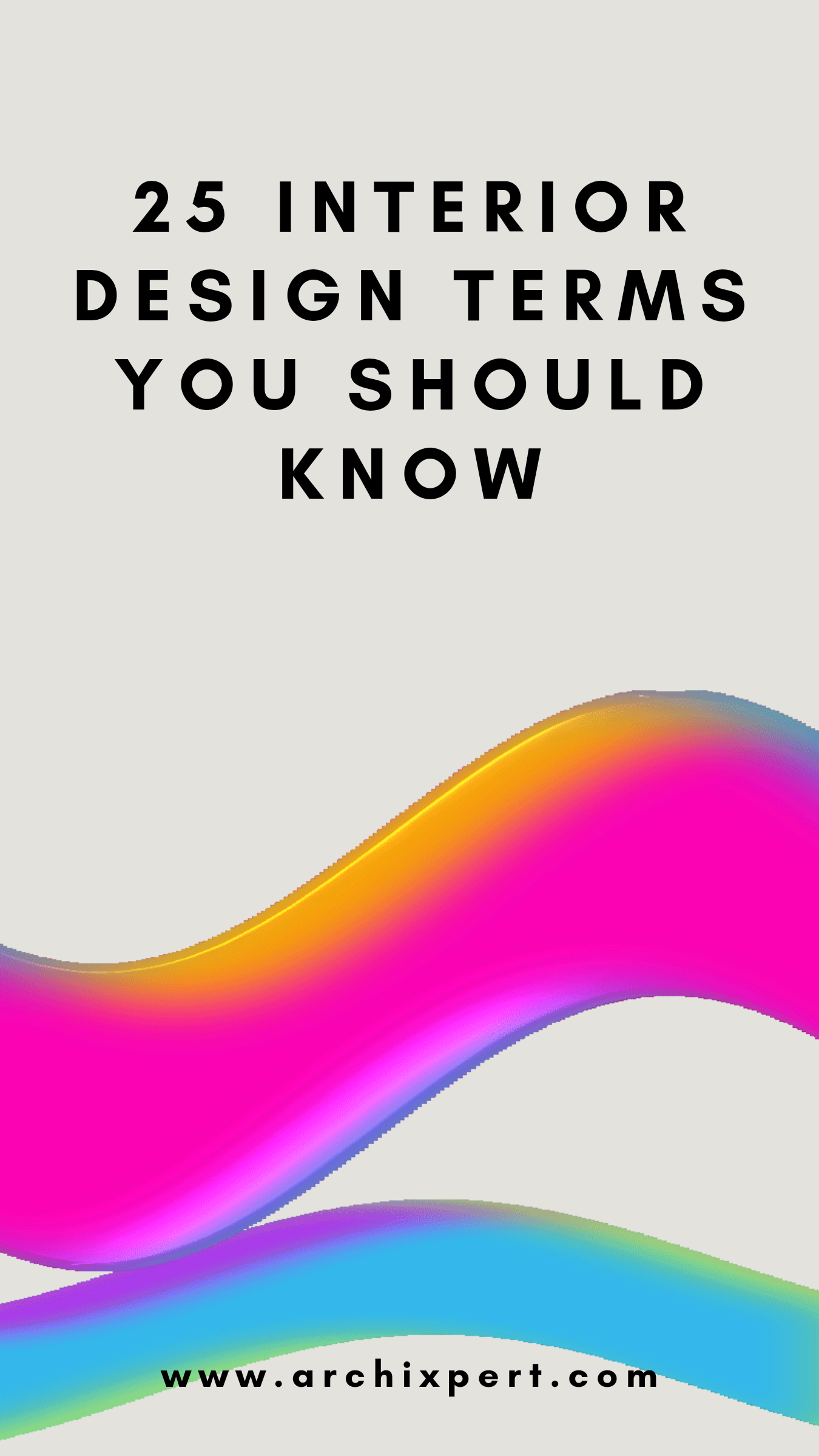

25 Interior Design Terms You Should Know: Essential Guide for Designers and Homeowners
Introduction:
Whether you’re an interior designer or simply someone looking to refresh your space, understanding key interior design terms is essential. These terms are commonly used in the industry and can help you communicate effectively with professionals or make informed decisions when decorating your home. Below are 25 must-know interior design terms that will elevate your design knowledge.
1. Accent Color
An accent color is a color used sparingly in a room to create contrast and highlight certain elements. It’s typically a bold or vibrant hue that complements the dominant color palette.
2. Balance
Balance refers to the distribution of visual weight within a space. It can be symmetrical (evenly distributed) or asymmetrical (intentionally off-balance for visual interest).
3. Focal Point
The focal point is the area of a room that draws the eye’s attention. This could be an architectural feature like a fireplace, a large piece of art, or a statement piece of furniture.
4. Scale
Scale refers to the size of objects in a room in relation to one another and the space itself. Proper scale ensures that furniture and decor fit the room proportionally.
5. Texture
Texture refers to the surface quality of materials used in a space, whether they are smooth, rough, soft, or hard. Adding texture to a room can create depth and interest.
6. Hue
Hue is another word for color. It refers to the pure color itself, without any shading (adding black) or tinting (adding white).
7. Monochromatic
A monochromatic color scheme uses varying shades, tints, and tones of a single color. This creates a harmonious and cohesive look in a room.
8. Open Concept
An open concept design refers to a layout where walls or barriers between living spaces (like the kitchen, dining, and living areas) are removed to create a larger, open space.
9. Negative Space
Also known as “white space,” negative space is the empty or open area around objects in a room. It’s an important design element that prevents overcrowding and creates a sense of calm.
10. Statement Piece
A statement piece is a bold item in a room that stands out and often serves as the focal point. This could be a large piece of art, an eye-catching chandelier, or a unique piece of furniture.
11. Minimalism
Minimalism is a design style characterized by simplicity, clean lines, and a lack of clutter. The focus is on functionality and creating a serene, open space.
12. Eclectic
Eclectic design is all about mixing different styles, periods, and materials in a cohesive way. It’s a curated blend of various influences that creates a unique and personalized look.
13. Transitional
Transitional design is a blend of traditional and contemporary styles. It combines the warmth and elegance of traditional design with the clean lines and simplicity of modern design.
14. Palette
A color palette is the range of colors used in a design scheme. It can include primary, secondary, and accent colors to create a cohesive look.
15. Floor Plan
A floor plan is a scaled diagram of a room or building viewed from above. It shows the layout, including the placement of walls, doors, windows, and furniture.
16. Wainscoting
Wainscoting is decorative paneling applied to the lower half of walls. It can add texture, elegance, and architectural interest to a room.
17. Sconce
A sconce is a light fixture attached to a wall. Sconces are often used for accent lighting and can add ambiance to a space.
18. Ergonomics
Ergonomics refers to the design of furniture and spaces that are comfortable and efficient for human use. Ergonomic design takes into account the physical needs and movements of people.
19. Veneer
Veneer is a thin layer of wood or other material applied to the surface of furniture or cabinetry to give it a more finished or luxurious appearance.
20. Trim
Trim refers to the molding or millwork used to frame doors, windows, and walls. It adds a finished look and can range from simple to ornate.
21. Mood Board
A mood board is a visual collage of colors, textures, images, and materials that conveys the overall style and direction of a design project. It’s used to inspire and guide the design process.
22. Feng Shui
Feng Shui is an ancient Chinese practice that focuses on creating harmony and balance in a space through the placement of furniture, colors, and materials. The goal is to enhance the flow of energy (chi).
23. Hygge
Hygge (pronounced “hoo-gah”) is a Danish concept that refers to creating a cozy, comfortable atmosphere that fosters contentment and well-being. It’s often achieved through soft lighting, warm textures, and inviting spaces.
24. Patina
Patina refers to the surface appearance that develops on materials like wood, metal, or leather over time due to age, wear, or exposure to elements. It adds character and a sense of history to an object.
25. Mid-Century Modern
Mid-century modern is a design style from the mid-20th century characterized by clean lines, organic shapes, and a mix of materials like wood, metal, and plastic. It’s known for its minimalist aesthetic and functional design.
Finally
Understanding these essential interior design terms can help you communicate more effectively with designers, contractors, and other professionals. They also provide a foundation for making informed decisions about your own home decor and design projects. Whether you’re planning a renovation or just refreshing your space, these terms will help you navigate the world of interior design with confidence.
More Related Idea’s and Tips
https://archixpert.com/15-critical-design-pitfalls-architects-and-interior-designers-must-avoid-to-retain-clients-and-elevate-projects/: 25 Interior Design Terms You Should Know